


Find Ideas
Find ideas to leverage the latest use of technology for your online marketing campaign.
Set Goals
Dream and plan ahead where you want to be and what works in your industry.
Ask for Help
Get personalized consultation on the best practices and approach for your business.
Looking for fresh ideas and proven tactics in gamification marketing? Explore our extensive collection of real-world case studies, innovative examples, and expert insights. Discover how leading brands are engaging audiences and driving results through gamification campaigns. Start transforming your marketing approach today!
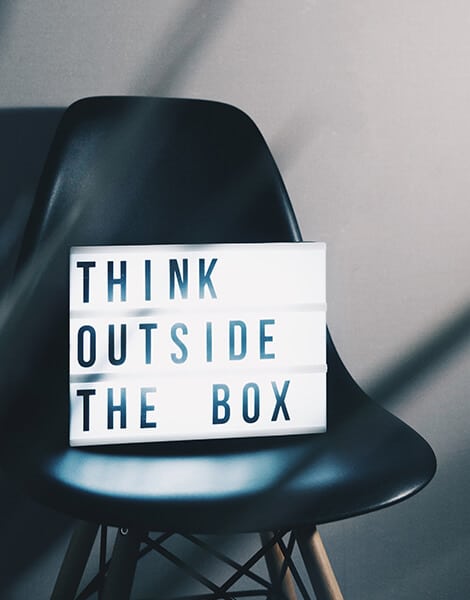




A Jeopardy-style campaign that combined knowledge quizzes with rewards in the form of crypto prizes. The campaign was a great success, with 246k unique players and a 95% game completion rate.

Coca-Cola has long been known for its innovative marketing campaigns. But recently, the brand took its marketing strategy one step further by leveraging gamification!

The objective was to create an interactive and enjoyable experience that would not only capture the attention of existing followers but also attract new audiences to the EFA’s content and initiatives.
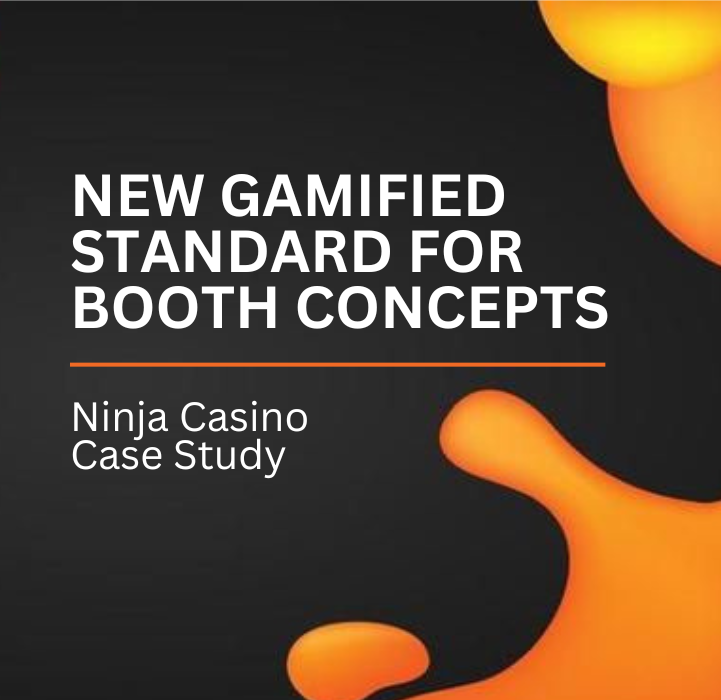
Ninja Casino’s gamified booth concept revolutionized event marketing, captivating attendees and elevating brand recognition at We Love the 90s festival. Witness the results as the Bubble Shooter game engaged festival-goers and left a lasting impact on the event’s success.
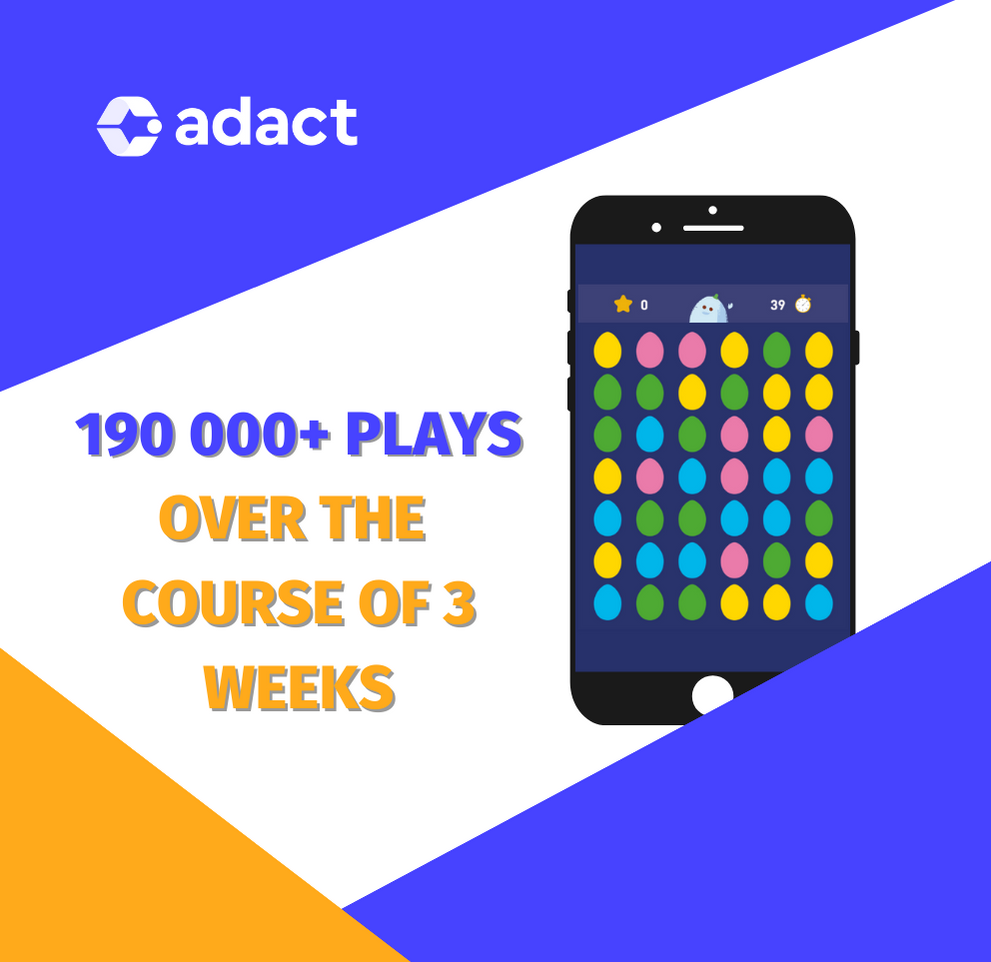
Just recently an egg producer in Estonia called Eggo launched a gamification marketing campaign that achieved mind-blowing results. When they shared the results with us even we, the experienced gamification wizards didn’t believe these results. Nevertheless, they were very true.

The public sector can bring great examples of inevitable struggles within one industry. Recognizing these hurdles, the Federation of Estonian Student Unions (EÜL) chose a creative approach: interactive marketing. This is their story.

Danija, a shoe retailer in the Baltic market, wanted to change how they marketed their products. They needed more people to sign up for their emails and buy more shoes. So, they tried something new: using games in their marketing, like the Wheel of Fortune.
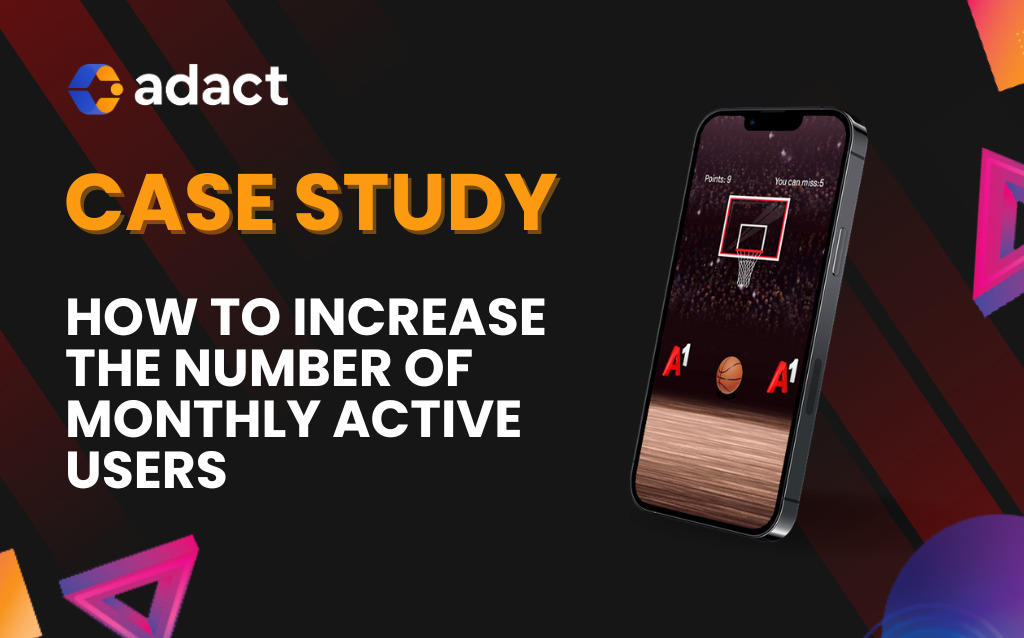
A1 Slovenija, a prominent telecommunications company in Slovenia, decided to embark on an exciting marketing journey during the FIBA World Cup 2023. A1 Slovenija saw an opportunity to connect with their Moj A1 app users in a unique and engaging way.
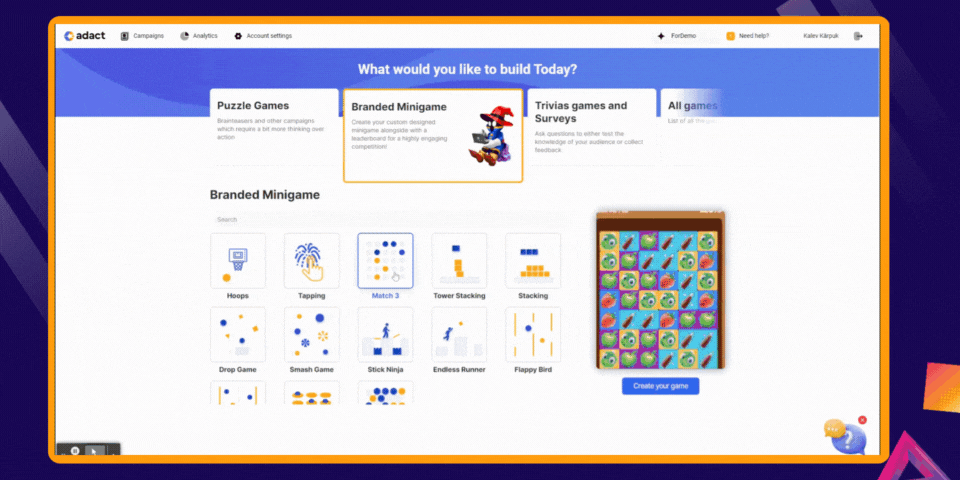
1. Choose the Experience
Choose between 60 unique campaign types. Feel free to create any number of them to brainstorm and see which suits your current goal the best.

2. Make it Your Own
Every experience can be 100% customized to include your branding – Fonts, Colors, Logos, Videos can be changed with ease without writing any code.
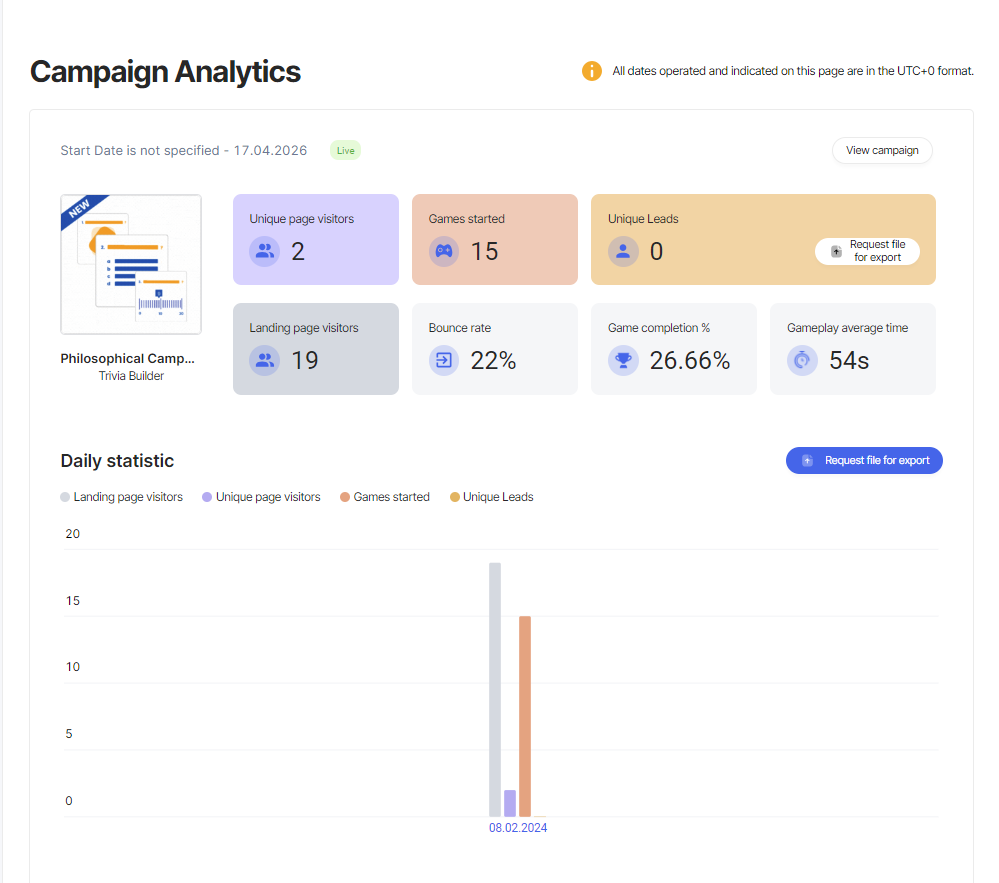
3. Monitor the Results
Get a complete overview of your campaign performance in real-time including Bounce Rates, Conversions and Visitors.
Sales gamification can significantly boost motivation and performance within sales teams. One popular approach is implementing a comprehensive leaderboard system that tracks various metrics beyond just closed deals, such as lead generation, customer satisfaction scores, and upselling success. This provides a more holistic view of performance and encourages well-rounded selling practices.
Another effective idea is creating a “Sales Quest” system where salespeople progress through different levels or stages, unlocking new rewards, responsibilities, or territories as they advance. This can be themed to align with your company’s brand or products, creating an engaging narrative that keeps sales staff invested in their progress.
Team-based competitions can also be highly effective, especially for fostering collaboration and knowledge sharing. For example, you could create a “Sales Olympics” with different events focusing on various sales skills, allowing team members to contribute their strengths while improving in other areas.
Consider implementing a points system that rewards not just results but also desirable behaviors and activities. This could include points for completing training modules, sharing best practices, mentoring new team members, or receiving positive customer feedback. These points could be redeemable for real-world rewards or used to “level up” in a gamified sales hierarchy.
Lastly, don’t underestimate the power of short-term, themed challenges to inject excitement into the sales process. These could be tied to seasons, product launches, or company milestones, providing bursts of motivation throughout the year.
Gamification can transform virtual events from passive experiences into interactive, engaging affairs. One powerful approach is to create a comprehensive “Event Journey” for attendees. This could involve a personalized avatar that gains experience and unlocks new features or areas of the virtual event space as participants engage with different aspects of the event.
Interactive maps or “worlds” can make navigation more engaging. Instead of a simple agenda, create a visual landscape where each session or activity is represented by a location or landmark. Attendees can then “travel” through this world, collecting badges or completing challenges along the way.
Networking, often a challenge in virtual settings, can be gamified through “Connection Quests.” Attendees could earn points or achievements for meaningful interactions, such as having conversations with a diverse range of participants or finding commonalities with other attendees. This could be facilitated through AI-powered matching or themed chat rooms.
Gamified Q&A sessions can boost engagement during presentations. Implement a points system for asking thoughtful questions or providing insightful answers, with a leaderboard showcasing the most active contributors. This not only encourages participation but also helps to surface the most relevant and interesting discussions.
Consider creating an overarching narrative or theme for the event, with attendees playing a role in an unfolding story. This could involve solving a mystery, completing a mission, or building something collectively over the course of the event. Progress in this narrative could be tied to session attendance, networking activities, or interaction with sponsors.
Gamification can significantly enhance customer engagement by making interactions with your brand more enjoyable and rewarding. One effective approach is implementing a tiered loyalty program that goes beyond simple point accumulation. Create a narrative around customer progression, perhaps themed to align with your brand identity. As customers advance through tiers, they could unlock exclusive content, early access to products, or personalized services.
Interactive product tours or onboarding experiences can be gamified to increase feature adoption and customer satisfaction. Create a “Discovery Quest” where users earn points or badges for exploring and using different aspects of your product. This not only educates customers but also encourages them to fully utilize your offering.
Community engagement can be boosted through gamification. Implement a reputation system in your customer forums or social media channels, where helpful contributions are rewarded with points, badges, or elevated status. This encourages knowledge sharing and builds a sense of community around your brand.
Consider creating seasonal or themed challenges that align with your products or services. For example, a fitness app might run a “Summer Shape-Up Challenge,” or a productivity tool could offer a “30-Day Efficiency Boost” program. These limited-time events can re-engage existing customers and attract new ones.
Referral programs can be gamified to incentivize word-of-mouth marketing. Instead of a simple referral bonus, create a multi-level achievement system where customers can earn increasingly valuable rewards as they refer more people. This could be visualized as growing a tree, building a city, or another thematic representation that makes the process more engaging.
Gamification can significantly boost employee engagement by making work processes more enjoyable and rewarding. One effective approach is to implement a comprehensive skill development system. Create a “Skill Tree” or “Career Path” visualization where employees can see potential growth opportunities within the company. As they complete training modules, gain certifications, or master new skills, they can “level up” their profile, unlocking new responsibilities or opportunities.
Peer recognition can be gamified to foster a positive work culture. Implement a system where employees can award points or badges to colleagues for helpful actions, innovative ideas, or exemplary work. These points could contribute to a “Workplace Hero” leaderboard, with top contributors receiving tangible rewards or company-wide recognition.
Team-based challenges can improve collaboration and cross-departmental understanding. Create monthly or quarterly “Quests” that require teams to work together to solve company-wide issues or innovate new solutions. These could be themed to align with company goals or values, with progress tracked on a visual “Quest Board” visible to all employees.
Onboarding can be transformed into an engaging “Welcome Adventure.” New hires could progress through different levels as they complete orientation tasks, meet key team members, and learn about company culture. This gamified approach can make the onboarding process more memorable and help new employees feel integrated more quickly.
Wellness initiatives can be particularly effective when gamified. Create a company-wide health challenge where employees earn points for various wellness activities, from exercise and healthy eating to meditation and proper sleep habits. This could be visualized as a journey or adventure, with different milestones representing improved overall health.
Consider implementing a “Innovation Lab” where employees can submit ideas for improving company processes or developing new products. Others can vote on these ideas, provide feedback, or collaborate to develop them further. Points could be awarded for participation, with top innovators recognized and their ideas potentially implemented.
Lastly, don’t underestimate the power of playful competition. Regular trivia contests about company knowledge, industry trends, or general topics can be a fun way to engage employees and promote learning. These could be quick, daily challenges or more comprehensive weekly or monthly events.
The key to successful employee engagement gamification is to ensure that the games and rewards align with company values and objectives. The goal is not just to make work fun, but to reinforce behaviors and skills that contribute to both employee satisfaction and company success. Regular feedback and iteration are crucial to keep the gamification fresh and effective over time.
Small businesses can leverage several creative marketing ideas to stand out in a competitive landscape. Hosting local events like workshops or pop-up shops can directly engage the community and showcase your expertise. Collaborating with complementary businesses allows for cross-promotion and reaching new audiences. Encouraging user-generated content through social media campaigns can boost authenticity and engagement. Implementing loyalty programs and referral incentives can drive repeat business and attract new customers. Starting a podcast or creating how-to videos can establish your authority in your niche. Interactive social media polls and personalized email marketing campaigns can help you connect with your audience on a deeper level. By focusing on local SEO optimization, you can ensure your business appears in local search results, attracting nearby customers. These strategies can help increase brand awareness, customer engagement, and loyalty without requiring a large marketing budget.
Creating an effective email marketing campaign requires a strategic approach that focuses on personalization and value. Start by segmenting your audience based on demographics, behavior, or preferences to deliver more relevant content. Craft compelling subject lines that use action words, create urgency, or spark curiosity to increase open rates. Personalize the content by using the recipient’s name and tailoring information based on their interests or past interactions. Incorporate eye-catching visuals that align with your message, but keep the overall message concise to respect your readers’ time. Include clear calls-to-action that guide readers on what to do next. Optimize your emails for mobile devices to ensure they look good and function well on smartphones and tablets. Experiment with different send times to find what works best for your audience. Regularly analyze metrics like open rates, click-through rates, and conversions to improve future campaigns. Always focus on providing value through useful information, exclusive offers, or entertaining content. Respect subscriber preferences by allowing easy opt-outs and honoring frequency preferences. By implementing these strategies and continuously refining your approach, you can create email campaigns that resonate with your audience and drive results.
As digital marketing continues to evolve, innovative ideas for 2024 focus on leveraging new technologies and creating more personalized, immersive experiences. Implementing AI-powered chatbots can provide 24/7 customer service and personalized recommendations. Creating augmented reality experiences allows for immersive product demos or virtual try-ons, enhancing the online shopping experience. Developing interactive video content, such as shoppable videos or choose-your-own-adventure style content, can boost engagement and conversion rates. Optimizing for voice search is becoming increasingly important as more consumers use voice-activated devices. Partnering with micro-influencers can lead to more authentic, targeted promotions. Gamified marketing campaigns can create interactive experiences that captivate audiences. Integrating social commerce features allows for seamless in-app shopping experiences on social media platforms. Leveraging user-generated content across marketing channels can increase authenticity and trust. Using AI for personalized video marketing and content creation can help scale personalized experiences. Virtual and augmented reality events offer immersive ways to launch products or host conferences. By embracing these innovative strategies, businesses can stay ahead of the curve and effectively engage their audience in the evolving digital landscape.
Making a virtual conference engaging requires a multifaceted approach that leverages technology and interactive elements. Incorporate live polls and Q&A sessions throughout presentations to keep attendees involved and gather real-time feedback. Utilize breakout rooms for smaller group discussions, allowing participants to network and share ideas more intimately. Implement gamification elements, such as points for attendance or participation, to encourage active engagement throughout the event. Offer virtual networking opportunities, like speed networking sessions or themed chat rooms, to facilitate connections among attendees. Provide on-demand content alongside live sessions, giving participants flexibility in accessing information. Invite engaging speakers who are comfortable with the virtual format and can deliver dynamic presentations. Invest in high-quality production values to ensure smooth audio and video experiences. Consider creating virtual exhibition halls where sponsors and vendors can showcase their products or services interactively. By combining these elements, you can create a virtual conference that is not only informative but also engaging and memorable for all participants.
Back-to-school campaigns offer retailers a prime opportunity to connect with students and parents alike. Consider launching a social media contest for the best school outfits, encouraging user-generated content and increasing brand visibility. Offer personalized school supply bundles that cater to different age groups or subjects, making shopping more convenient for parents. Host virtual styling sessions to showcase your products and offer fashion advice for the new school year. Implement a school essentials scavenger hunt in-store or online to make shopping more fun and interactive. Partner with local schools to offer exclusive deals or donate a portion of sales to school programs, fostering community goodwill. Create a back-to-school lookbook featuring influencers or local students to inspire purchases. Develop a student ambassador program to promote your brand on campuses and social media. Consider launching an eco-friendly school supply line to appeal to environmentally conscious consumers. By implementing these creative ideas, retailers can stand out in the competitive back-to-school market and create memorable experiences for their customers.
Improving customer engagement through marketing requires a customer-centric approach that focuses on building relationships and providing value. Implement personalized communication strategies by segmenting your audience and tailoring messages to their specific interests and needs. Create interactive content such as quizzes, polls, or calculators that provide value while gathering insights about your customers. Leverage social media platforms to foster a sense of community around your brand, encouraging discussions and user-generated content. Offer exclusive content or perks to loyal customers, making them feel valued and appreciated. Host virtual events or webinars that provide educational or entertaining content related to your industry. Encourage and showcase user-generated content to build trust and authenticity. Prioritize excellent customer service across all channels, responding promptly and effectively to inquiries and concerns. Use storytelling in your marketing to create emotional connections with your audience, sharing your brand’s values and mission. Implement a loyalty program that rewards engagement as well as purchases. Regularly seek feedback from your customers and act on their suggestions to show that you value their input. By focusing on these engagement-driven strategies, you can create a more loyal and active customer base that feels connected to your brand.
Let’s Work Together & Grow Your Business
Call Now -
1-800-700-600
Location -
Plan Your Visit -
Social Media -



Looking for additional ways to incorporate gamification into your strategy? We’ve compiled a variety of ideas that might suit your needs. Whether you’re focused on sales, employee engagement, or customer interaction, you’ll find some useful concepts to consider. Take a look at our expanded list of gamification ideas and see if anything catches your eye.